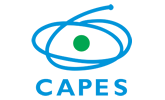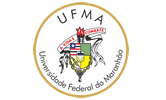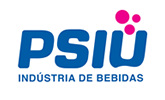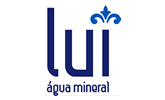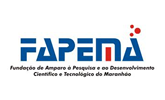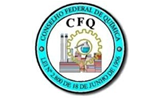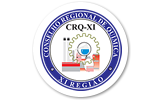Thermodynamic properties of new protic ionic liquids: 2-hydroxy diethylammonium propionate (2-HDEAPr) + short hydroxilic solvents at different temperatures
ISBN 978-85-85905-23-1
Área
Físico-Química
Autores
Blanco, P. (UFBA) ; Camargo, D. (UFBA) ; Andrade, R.S. (UFRB) ; Iglesias, M. (UFBA)
Resumo
In this work, we synthesized the protic ionic liquid 2-hydroxy diethylammonium lactate and analyzed its volumetric and acoustic trend into different hydroxilic media (water, methanol and ethanol) at 288.15-323.15 K. The apparent molar volume and apparent molar isentropic compressibility values have been evaluated and fitted to a temperature dependent Redlich- Mayer equation. Isobaric expansibility, isothermal coefficient of pressure excess molar enthalpy and other acoustical parameters were computed due to their importance in the study of specific interactions. The data were used to test the prediction capability of different models The obtained results indicate that ionic liquid interactions in water are weaker than in the studied alcoholic solutions, in accordance with previous results.
Palavras chaves
Protic Ionic Liquids; thermodynamic properties; prediction model
Introdução
Ionic liquids (ILs) are a new class of solvents composed only of ions but whose size and shape differences allow them to remain liquid at room temperature. The potential of fine tune the ILs properties, allow the design of solvents or mixtures of solvents for task specific applications leading to more efficient and sustainable processes and products [1]. The so- called protic ionic liquids show additional advantages due to their simple synthesis, low cost and biodegradability [2, 3]. In this study, we synthesized the protic ionic liquid 2-hydroxy diethylammonium propionate (2- HDEAPr) and investigated its volumetric and acoustic behaviour into different hydroxylic media at 288.15-323.15 K. The corresponding apparent molar volume and apparent molar isentropic compressibility values have been evaluated from the experimental data and fitted with a temperature dependent Redlich-Mayer equation. Isobaric expansibility and isothermal coefficient of pressure excess molar enthalpy were computed due to their importance in the study of specific interactions. The new experimental data were used to test the capability of prediction of different theoretical models. The excess molar volumes were negative throughout the composition range for all mixtures at any condition. An intersection point in isotherms of isentropic compressibility was observed for aqueous solutions which may be an indication of the clathrate structural interactions at high aqueous composition. The observed inverse dependence on temperature for aqueous or alcoholic mixtures, point out the special trend of packing of these mixtures and their strong dependence on steric hindrance. The results were interpreted in terms of ion-dipole interactions and structural factors of the protic ionic liquid and hydroxylic solvents.
Material e métodos
Diethanolamine better than 98.0% was placed in a threenecked flask all- made- in-glass equipped with a reflux condenser, a PT-100 temperature sensor for controlling temperature and a dropping funnel. The propionic acid (>98.0%) was added dropwise to the flask under stirring with a magnetic bar. Stirring was continued for 24 h at laboratory temperature, in order to obtain a final viscous yellow liquid. No solid crystals or precipitation was noted when the liquid sample was purified or was stored at freeze temperature for a few months. The alcohols used in the preparation of samples were Merck quality with richness better than 99.5 mol%. Double distilled deionized water for preparation of solutions was applied. Solutions of 2-HDEAPr for measurements were prepared by weighing diluted stock solutions of corresponding protic ionic liquid in sealed vials. Each vial was weighted with a precision (2 10-5 g) device (GRAM-VXI Serie Analytical Balance). The densities and ultrasonic velocities of pure components and their mixtures were measured with an Anton Paar DSA-5000 vibrational tube densimeter and sound analyzer, with a resolution of 10-5 gcm-3 and 1 ms-1. Accuracy in the temperature of measurement was better than 10-2 K by means of a Peltier temperature control device. FT-IR spectrum was performed in order to characterize the synthesis product and to confirm its structure. FT-IR spectrum was taken by a Jasco FT/IR 680 plus model IR spectrometer, using a NaCl disk. The broad band in the 3500-2400 cm-1 range exhibits characteristic ammonium structure. The OH stretching vibration is embedded in this band. The broad band centered at 1600 cm-1 is a combined band of the carbonyl stretching and N- H plane bending vibrations.
Resultado e discussão
As earlier observed [4-6], densities are slightly affected by temperature
while ultrasonic velocities decrease dramatically when increasing
temperature into the mixtures. Only pure water gathers an inverse tendence
for ultrasonic velocity. Attending to the results, it was found: (i)
organic
compounds have strong effects on the physicochemical properties of protic
ionic liquids, specially on volumetric trend. The degree of their
influence
depends on nature of anion/cation, and nature of the involved organic
solvents; (ii) open iceberg structure of water shows a hydrogen bond
potency
higher than those for short alcohols, although in terms of their
volumetric
properties, the effect of organic compounds investigated follows the
order:
water<ethanol<methanol. Based on these observations and FTIR results, we
suggest that the filling of hydroxylic solvents into the interstices of
the
ionic network and new ion–dipole interactions are the main factors
controlling the strong contractive trend. The ion–dipole interactions
weakened the association of the cation/anion of the ionic liquid, as well
as, the hydrogen bond interactions into bulk solvent, leading to a higher
mobility of the ions and a lower density of the mixtures from pure 2-
HDEAPr.
The obtained intersection point in isentropic compressibility isotherms
for
aqueous 2-HDEAPr may be an indication of clathrate-like structure
formation
at dilute solvent compositions, almost at the same point that for other
protic ionic liquids [5-6]. The progressive aweakening of ion-ion bonds
are
probably the reason of the strong decrease in ultrasonic velocity.
Conclusões
The density and ultrasonic velocity have been evaluated for hydroxylic mixtures of a new protic ionic liquid 2-HDEAPr, at 288.15-323.15 K. In terms of theoretical estimation (Mchaweh-Nasrifar-Moshfeghian (MNM) model, modified Heller equation (MHE) for density and Collision Factor Theory (CFT) for ultrasonic velocity), the better results are showed at low or high solvent concentrations, and low temperatures. As a whole, the studied models are, at least, of qualitative accuracy.
Agradecimentos
Referências
[1] PLECHKOVA, N.V.; SEDDON, K.R. Applications of ionic liquids in the chemical industry. Chemical Society Reviews, v.37, p. 123-150. 2007.
[2] GREAVES, T.L.; DRUMMOND, C.J. Protic ionic liquids: properties and applications. Chemical Reviews, v.108, p. 206-237. 2008.
[3] PERIC, B.; MARTÍ, E; SIERRA, J.; CRUAÑAS, R.; IGLESIAS, M.; GARAU, M.A. Terrestrial ecotoxicity of short aliphatic protic ionic liquids. Environmental Toxicology and Chemistry, v.30, n.2, p. 2802-2809. 2011.
[4] COTA, I.; GONZALEZ-OLMOS, R.; IGLESIAS, M.; MEDINA, F. New short aliphatic chain ionic liquids: Synthesis, physical properties, and catalytic activity in aldol condensations, Journal of Physical Chemistry B, v.111, p.12468-12477, 2007.
[5] IGLESIAS, M.; TORRES, A.; GONZALEZ-OLMOS, R.; SALVATIERRA, D.; Effect of temperature on mixing thermodynamics of a new ionic liquid: {2-Hydroxy ethylammonium formate (2-HEAF) + short hydroxylic solvents}, Journal of Chemical Thermodynamics, v.40, p. 119-133, 2008.
[6] ALVAREZ, V.H.; MATTEDI, S.; MARTIN-PASTOR, S.; AZNAR, M.; IGLESIAS, M. Thermophysical properties of binary mixtures of {ionic liquid 2-hydroxy ethylammonium acetate + (water, methanol, or ethanol)}, Journal of Chemical Thermodynamics, v.43, p.997-1010, 2011.

